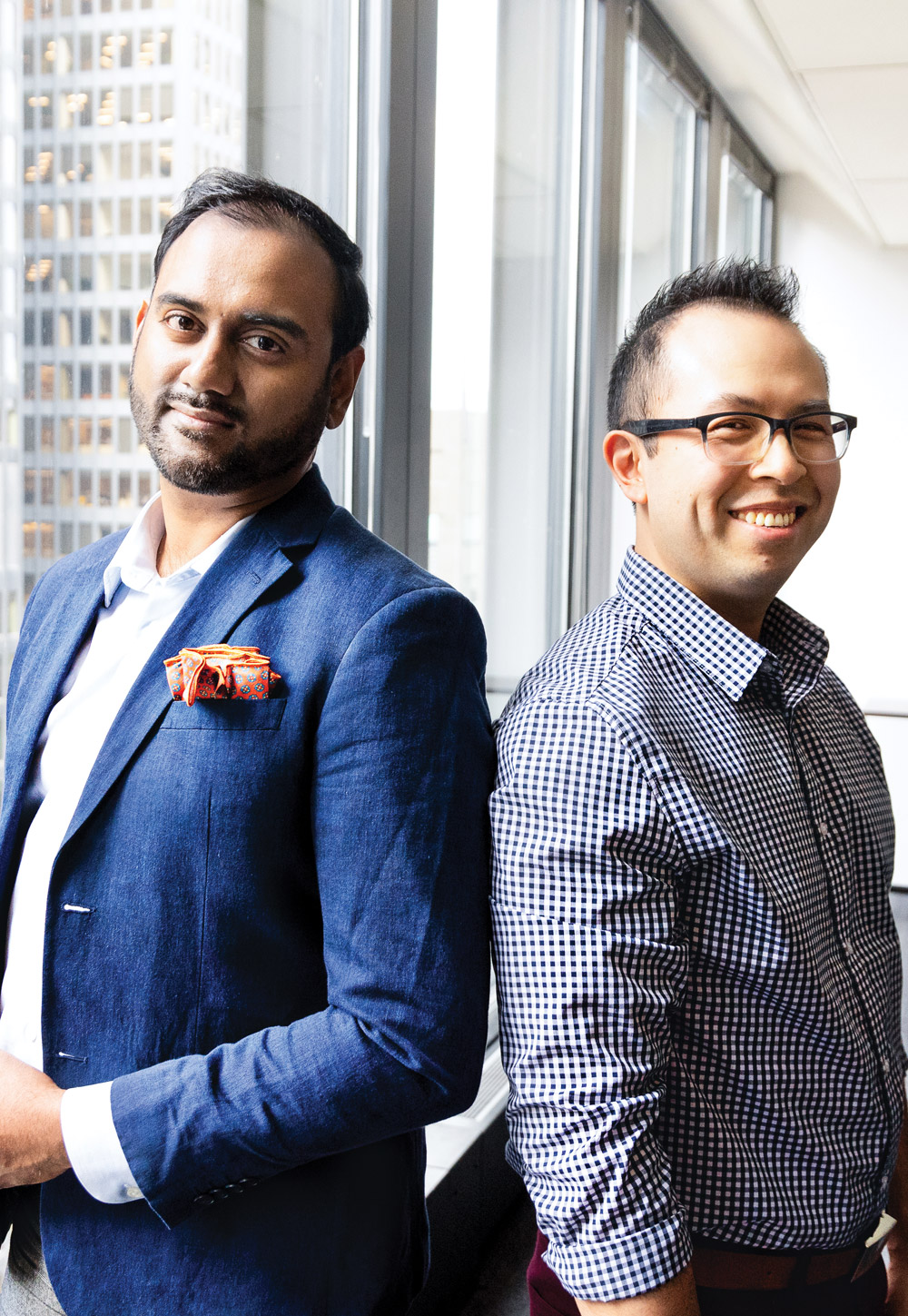Making sense of math

Today, Dr. Carolyn Snider is chief of emergency medicine at St. Michael’s Hospital in Toronto. Fifteen years ago, she was a resident working in trauma rooms at St Mike’s and another Toronto hospital, Sunnybrook. One day, a young man came in. He’d been stabbed in the arm. Snider remembered him as nice. They chatted. She sutured his arm.
A few months later he was back. This time he’d been shot. Though he survived, the bullet had gone in his spine. He was left paralyzed.
Snider remembers it as an important moment in her career, one that left her wondering: Doctors are supposed to heal, but isn’t prevention part of the job, too? If someone has chest pains, medicine can be prescribed, cardiologists consulted, exercise and nutrition discussed – all to lessen chances of a heart attack. What tools did Snider have to prevent this young man from getting shot? “There’s no chapter in emergency medicine textbooks on that one,” she says.
Such repeat injuries were not unusual either, and not only in Toronto. In 2011, Snider left Toronto to work in the emergency department at Winnipeg’s Health Sciences Centre. There again she treated the same youth over and over. In Winnipeg, more than 20 per cent of teens and young adults who enter a hospital with violent injuries are back within a year – again as a result of violence.
Snider wanted to reduce that figure. But how? She spoke to medical experts. She talked with politicians and community leaders in Winnipeg. The city has one of Canada’s highest violent crime rates. Snider met with former gang members. One told her about a time he was stabbed. In hospital, police took his pants as evidence. By the time he was stitched up and released, he had no pants and no one to call – except his gang-member friends. He wished he’d had a better option.
It led Snider to organize an innovative and groundbreaking program. Called the Emergency Department Violence Intervention Program (EDVIP), it involved doctors, nurses, social workers and many others in Winnipeg. The goal: to help injured young people extricate themselves from their violent lives. That effort would start the moment they entered the emergency department.
Emergency rooms are built to heal the sick and hurt. But they’re also good for what Snider refers to as “teachable moments.” A person with a head injury from a bicycle accident might be more open to wearing a bike helmet, for example. When a 17-year-old stab victim is lying in a hospital, he suddenly has time to reflect. “He’s more willing perhaps to make a change in his life,” says Snider. EDVIP was started with that idea in mind.
“It was amazing to see these young people speak up and tell us what they needed to help them escape the violence in their lives. We were there to coach them into being successful.”
Under the program, young people treated in hospital for violent injuries soon found an EDVIP support worker by their bedside. Some support workers were former gang members who could easily relate to the difficult lives of the youth before them. That meeting would start a process in which the support worker would offer help (Did the young person need clothes? Food for their family?) and, sooner or later, a question: How can we help improve your life so you never end up back in the emergency department?
For some young people the answer was to go back to school. Others required more immediate help first, such as access to substance abuse programs, food banks or mental health care. What made the program work, says Snider, was that the young people themselves decided their best course of action. “It was amazing to see these young people speak up and tell us what they needed to help them escape the
violence in their lives. We were there to coach them into being successful.”
EDVIP began in 2013, with Snider as medical director and principal investigator. The program proved successful. A randomized-control trial on the results found that the number of return visits to the emergency department by young people in the program fell 44 per cent. High school enrolment and graduation rates rose, while time spent in emergency departments and in dealing with police and courts fell.
EDVIP treated youth violence for what it is – a public health issue that needs solutions. The program received widespread recognition, and Snider wrote a report for the World Health Organization on the role of emergency departments in reducing violence.
Marketing to medicine
Carolyn Snider never intended to be a doctor. She grew up in Toronto; her mom a teacher, her dad an accountant. In high school, she stopped taking science classes, intending to pursue a business career. Smith was a natural choice; her brother, Bill Snider, BCom’94, was already there. “I had a fantastic time in Commerce,” she says. “I finished with the idea that I would end up in marketing or leadership in a creative business environment.”

emergency medical staff moving through hallway
At university, she prepared for such a career. Two summers were spent in a brand management internship at Procter & Gamble. But by her fourth year, Snider wasn’t so sure about a career in business. That feeling lingered after university when she first worked for a small company in Bangkok, then returned to Canada. She decided to
look for a new job, one that might be a better fit.
To help find it, she sought direction from a career expert. Tests suggested medicine, but Snider protested. “I said, ‘I can’t, I stopped doing sciences in Grade 10,’ ” she recalls. But the expert was more sanguine. “He showed me this timeline of a person, from around 18 to 65. He said, you’re here, near the beginning. You can do those sciences, you can retrain and go into medicine and by the time you do that, you’ll still have a big amount of your career left.”
Snider quickly got her high school science credits, then enrolled at the University of Toronto for a Bachelor of Science. Next came medical school, at McMaster University. She graduated in 2003, then spent five years doing her residency. Along the way, she earned a Master in Public Health from Johns Hopkins University in Baltimore.
The patient pathway
Situated in downtown Toronto, St. Michael's is one of two trauma hospitals in the city. If you’re shot or stabbed, chances are good that the ambulance will take you to St. Mike’s. Snider worked there early in her career and, after nearly eight years in Winnipeg, returned to the hospital in January.
As chief of the emergency department, she oversees around 40 physicians and an emergency room where there’s rarely a dull moment. Each month, around 5,000 to 6,000 patients come through. Snider's business degree still comes in handy in the day-to-day running of the department. “I have Excel spreadsheets all over. And of course I went through Commerce, so I can do them with my eyes closed, practically,” she says with a smile.
A particular interest for her now is the patient experience. Specifically, Snider is looking at how care is delivered to disadvantaged people, and how it can be improved. “The system we have today, the pathway we take as patients, was really devised for you and I. Some might call that the advantaged population.”
She goes on to explain: “If I have chest pains, I have a phone number and 911 will pick me up, and I’ll be able to tell people about my [medical] history because I’m literate and I have a strong education. Then I can advocate for myself as I go through the emergency department, and I can advocate for good outpatient care. And when I go to cardiac rehab, I will have a family doctor who will follow up on me, and I have access to a car to get me to the cardiologist appointment…” However, she points out, someone who is homeless or impoverished with little education “doesn’t have all those advantages that I have as a patient.”
Snider wants to fix the imbalance. As with EDVIP in Winnipeg, she aims to involve the patients themselves to find a solution. It’s a big job, she admits. “We’re just starting to have meetings on it.”
Down the road, the process could even involve changes to the way emergency rooms are laid out. “If you think about someone with mental health issues who suffers from hallucinations, when they come into the emergency department, it’s loud,” she says. “So there’s this incredible amount of cognitive overload. And it continues and continues. They’ve come in for help, and all we’re doing is making it worse…So how do we find space in that place for someone with that condition? That’s an example of what we’re trying to solve.”
Those deep moments
During her time at medical school, Carolyn Snider had to decide what kind of medicine to practise. She chose emergency medicine because, as she puts it, “you meet people on the worst day of their life and you have an opportunity to make it a little better.”
The night before the interview for this article Snider had worked a nine-hour shift in the emergency department, until 3 a.m. She saw a typical menagerie of patients: people who’d fallen, abdominal pains, a broken limb, a drug overdose. But one case stood out.
A young man had gone into cardiac arrest at work. His heart stopped beating. A quick-thinking co-worker did CPR before an ambulance arrived. Snider says the best part of her job that night wasn’t treating the patient. It was meeting the colleague, seeing it dawn on him that he had just saved a life; then watching the patient’s wife realize her husband was not going to die. It was a moment of joy when otherwise there might have been despair.
Snider calls these “the deep moments,” and says, “it’s why I’m an emergency room doctor…In this case, what was incredibly impactful for me was that the guy [the worker’s colleague] wasn’t paid to save lives. I’m paid to save lives. But he took a CPR course and had the gumption and ability to do CPR when he saw his colleague fall. And he lived. Without it, he wouldn’t have lived.”
